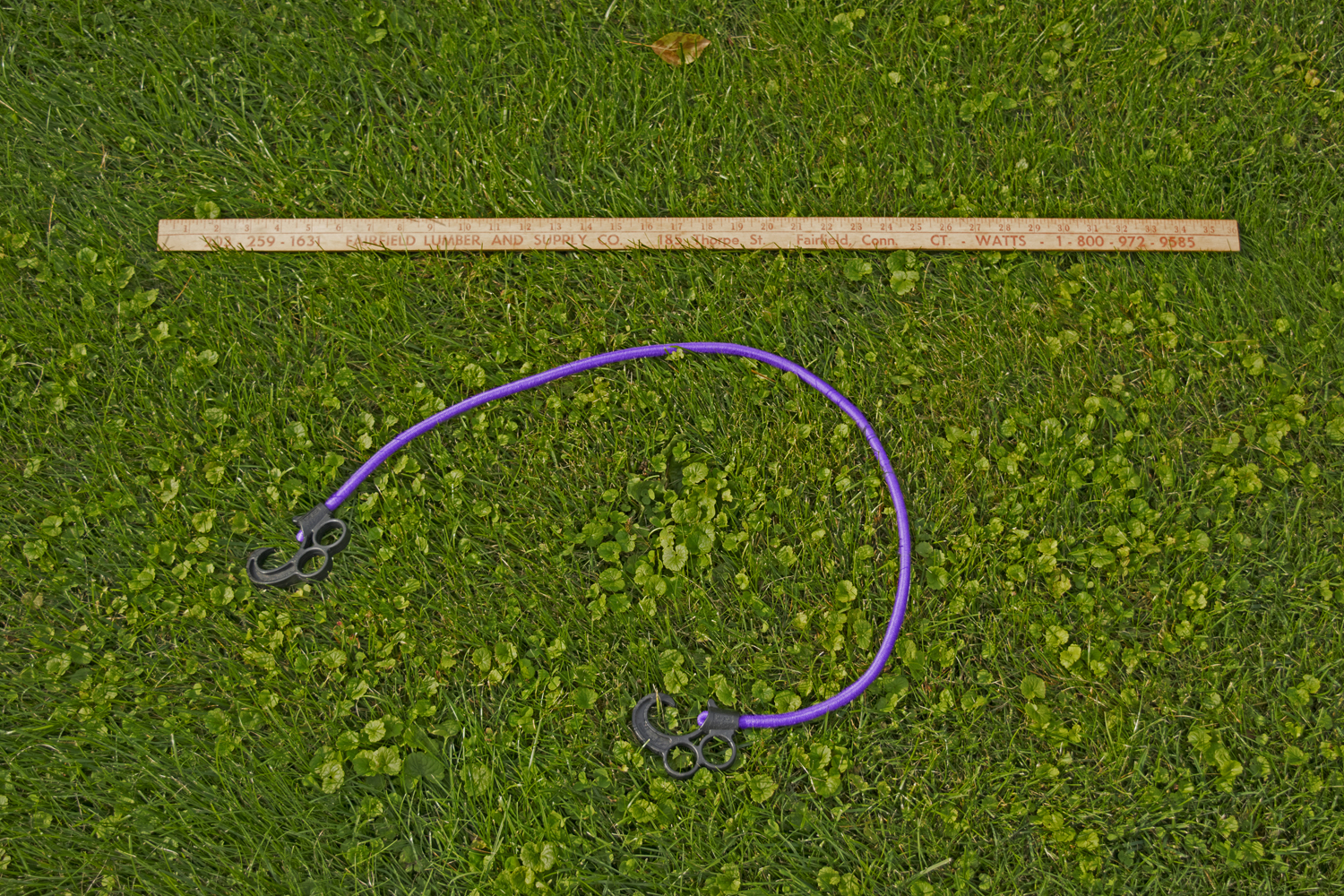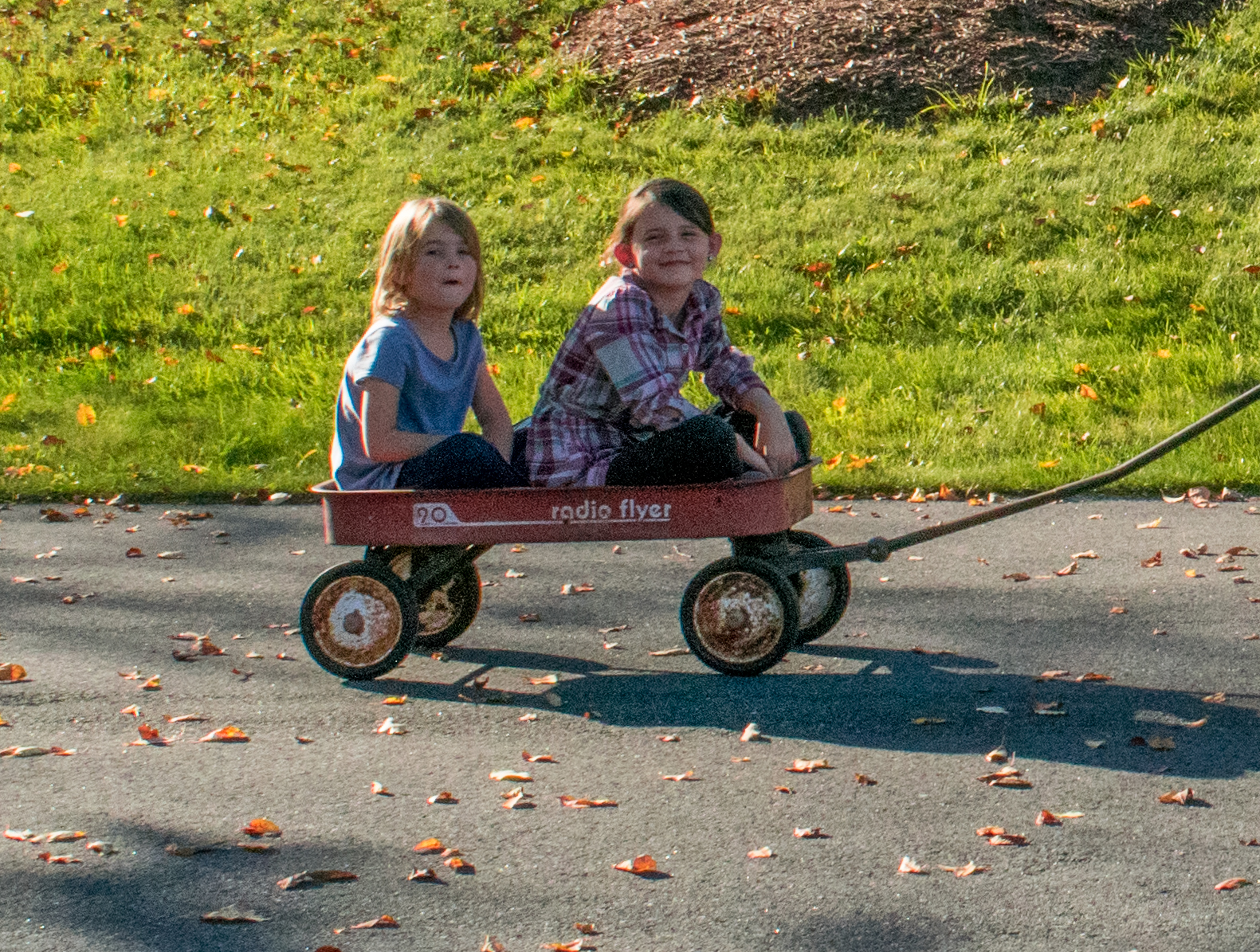ISAAC NEWTON SAYs...
Isaac Newton lived from 1642 to 1726. He made lots of observations of the world around him and proposed three laws of motion. These laws are the foundation of just about all of the motion we experience. In fact, without them, we wouldn't be able to send rockets into space or land them on Mars!
Newton's First Law
Newton's First Law seems pretty obvious:
Anything that is moving steadily will continue to move that way until a force acts on it. Anything that is sitting still will continue to sit still until a force acts on it.
After a player hits a puck, it travels at almost constant velocity.
If you are playing hockey and you hit a puck, the puck will travel across the ice without changing direction or slowing down much. (We'll talk about the slowing down part later.) It keeps going in a straight line at pretty much the same speed. That is, it travels with constant velocity.
The puck's velocity changes after another player hits it (applies a force to it).
If another hockey player hits the moving puck, its speed and direction of travel will change. In other words, the steady motion of the puck across the ice will continue until someone else applies a force to the puck with a hockey stick and sends it off in another direction. This is Newton's First Law.
Now suppose a croquet ball is sitting still in the grass. It will continue to stay put until you hit it with a croquet mallet. The red ball starts out not moving.
The red croquet ball is sitting still on the grass.
Once you hit it, the red ball starts to move.
The red croquet ball is now moving because a force was applied to it.
The croquet mallet applies a force to the ball, and according to Newton's First Law, the ball starts to move.
In summary, Newton's First Law tells us that if you apply a force to something, its motion will change. It doesn't tell us how much it will change, though. For that, we need Newton's Second Law.
NEWTON'S SECOND LAW
Newton's Second Law is a bit more complicated that his First Law. However, it is very powerful, since it tells us how much something will move when you apply a force to it.
When you apply a force to an object, causing its velocity to change, the new velocity depends on the force you apply and the mass of the object.
In order to understand this law, let's consider a couple of examples.
A large force applied by the bat to the ball causes a large acceleration. As a result, the ball moves fast when it leaves the bat.
First, we'll take a look at what happens when you hit a softball with a bat. When the ball is pitched, it comes at you with a certain velocity. If you are lucky enough to hit the ball, your bat applies a force to the ball when the two are in contact with each other. That force causes the ball to accelerate. During the acceleration period, the velocity of the ball changes. It slows down, stops, then reverses direction and winds up with a new velocity in the opposite direction when it leaves the bat.
In addition to the mass of the softball, the size of the force applied by the bat determines the size of the acceleration and therefore the size of the velocity when the ball leaves the bat. If you apply a large force with the bat, the softball will have a large velocity when it leaves the bat. A large velocity means that the ball will travel far each second. You might get a base hit or even a home run!
Note that in the picture above, the labels on the velocity vectors are different because the velocities themselves are different. We do this in any image where there are two or more velocities (or masses or whatever). We are using v1 for the velocity before the hit and v2 for the velocity afterward, but we could call the velocities anything we want!
A small force applied by the bat to the same ball causes a small acceleration. As a result, the ball moves more slowly when it leaves the bat than when a large force is applied.
If you apply a small force with the bat, the same softball will have a small velocity when it leaves the bat. This means that it won't go very far each second. Bunting the ball like this might get you to first base if you can run fast! You can see that we call the pitched velocity v1 and the velocities at two times after the bunt v2 and v3.
To summarize, a large force on the softball produces a large acceleration while a small force on the same softball - with the same mass - produces a small acceleration.
As a second example, suppose you are shooting an arrow using a bow. When you pull back on the bow and arrow, the bow is stretched.
A stretched bow exerts a force to return itself to its unstretched state.
When you let go of the bow, it exerts a force to return itself to its normal shape. This force is applied to the arrow as well as the bow. The force on the arrow causes it to accelerate when it is in contact with the bow. When it is released from the bow, it is no longer accelerating, but it has a new velocity as a result of the acceleration.
When you release the arrow, the bow applies a force to it, causing it to accelerate. Note how far the arrow travels during a single time interval. That's an indication of the velocity of the arrow after it leaves contact with the bow.
So, how much does the arrow accelerate when it is in contact with the bow? That depends on the size of the force the bow can exert and the mass of the arrow.
Suppose now that you tape two arrows together.
Two arrows taped together have twice the mass as one.
The two arrows together have twice as much mass as a single arrow. If you pull the arrows back in the bow by the same amount as before, the bow will exert the same force on them that it did on the single arrow. But since the mass is twice that of a single arrow, what will happen to the acceleration?
When the bow applies the same force to two arrows together, the acceleration is half that of a single arrow, so the release velocity of the two arrows is half as much as that of one arrow. Compare the distance between the arrows in the same time interval when one arrow and two arrows are shot.
Newton's Second Law tells us that if the force is the same, the acceleration of two arrows together will be half the acceleration of the single arrow. This means that two arrows together will leave the bow with half the velocity of a single arrow. You can see that this is true by comparing the distance traveled by one arrow with that traveled by two arrows during the same time interval. Two arrows together go half as far each time interval as the single arrow.
Here's something you can try that shows the connection between force, mass, and acceleration. You will need a bungee cord and yardstick, and a wagon with a couple of friends (or a pile of books or rocks) inside.
If you stretch the bungee cord by some amount, it will want to return to its unstretched length, and it will exert a force to do so. You will have to hold the cord at both ends to keep it stretched.
A stretched bungee cord exerts a force to return itself to its unstretched length.
Now attach the stretched bungee cord to the handle on the wagon. As soon as you let go of the end near the handle, the bungee cord will pull on the wagon as it tries to return to its unstretched length. Try to keep the bungee stretched to the same length, using the yardstick as a guide. What will happen?
The stretched bungee applies a force to the wagon.
The bungee cord will apply a steady force to the wagon. The wagon will start to move. It will accelerate! You will have to run - faster and faster - to keep up. And as you run, you will feel yourself accelerating!
The force exerted by the stretched bungee causes the wagon to accelerate. Notice that the wagon moves farther each time interval than it did the previous time interval.
As you can see from the white arrows, the wagon moves forward more each second than it did the previous second.
In summary, Newton's Second Law describes the relationship between force, mass, and acceleration. For hundreds of years, it has been used to describe and predict all kinds of motion.
NEWTON'S THIRD LAW
Like Newton's First Law, Newton's Third Law helps explain motion that we see all the time.
If you push on something, it will push back at you by the same amount. If you pull on something, it will pull back by the same amount. In other words, for every force, there is an equal and opposite force.
When you apply a force to a wall, the wall will apply the same force on you.
Suppose you push on a wall. You are applying a force to the wall and the wall pushes back on your hands with the same force but in the opposite direction. If the wall didn't push back, you would fall through it! In the picture above, the force you apply to the wall is labeled F1 and the force that the wall applies to you is F2.
The wall exerts a force on you for as long as you are in contact with it. If you are free to move, this force causes you to accelerate. As soon as you let go of the wall, you will have a new velocity. If you are wearing ice skates, that velocity will stay almost constant, so you will glide across the ice.
Once you let go of the wall, you will have a new velocity as a result of the wall pushing on you.
Dogs use Newton's Third Law when they jump into the water off a dock. The dog pushes down on the dock (F-dog) and the dock pushes back on the dog (F-dock), sending him flying through the air!
The dog pushes on the dock and the dock pushes back on the dog, allowing him to leap into the water.
Newton's Third Law doesn't always result in motion. For example, suppose you have a very friendly dog who jumps up to greet you. The dog's paws push on your body (F1) and your body pushes back on the paws (F2). If you are not standing on a slippery surface, the forces of the floor on your feet - yours and the dog's - will keep each of you from moving. These forces are due to friction and we will be discussing them later on.
When a dog's paws exert a force on you, you respond and exert an equal and opposite force on the paws.
In summary, Newton's Third Law tells us that forces occur in pairs. If there is a force of one object on another, there is an equal opposing force of the second object on the first.


















